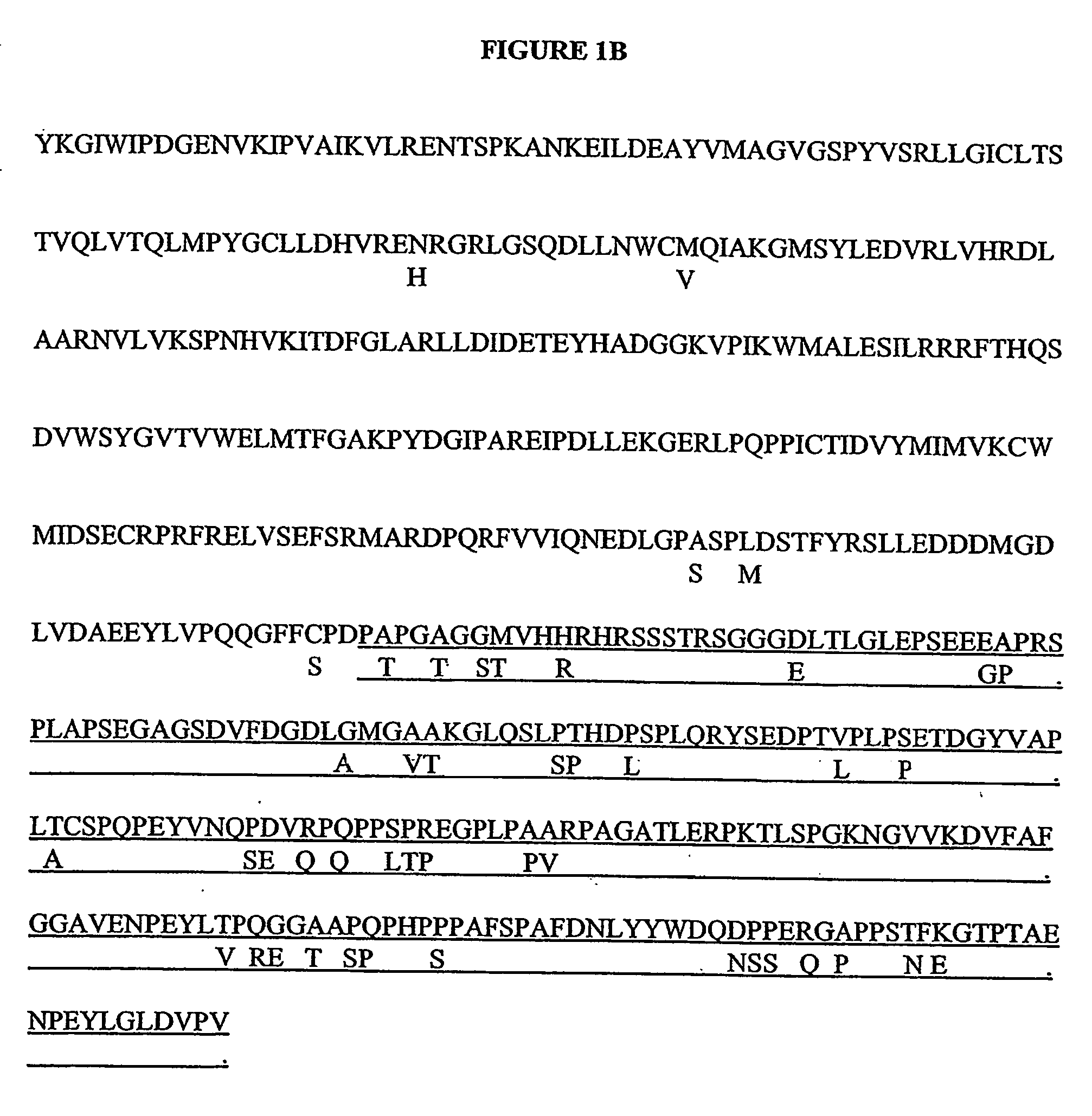Her2/neu target antigen and use of same to stimulate an immune response
a technology of her2/neu and target antigen, which is applied in the direction of viruses, tumor specific antigens, peptides, etc., can solve the problems of limiting the dose of chemotherapy that a patient can tolerate, unable to kill rapidly dividing normal cells, and unable to meet the needs of patients,
- Summary
- Abstract
- Description
- Claims
- Application Information
AI Technical Summary
Problems solved by technology
Method used
Image
Examples
Embodiment Construction
Her2 / neu Vaccine Protects Against Tumor Growth
[0081] This example demonstrates that a vaccine based on regions of the Her2 / neu protein that are not present in other proteins increase survival in a syngeneic rat tumor model.
[0082] The Her 2 / neu breast cancer tumor associated antigen (TAA) was selected as the prototypical target antigen for the development and evaluation of genetic vaccination strategies. The Her2 / neu protein is a member of the c-erb B / epidermal growth factor receptor family and is overexpressed in approximately 35% of breast cancers (Harris et. al., Cancer of the Breast, in "CANCER: Principles & Practice of Oncology" (Devita and Rosenberg, Eds., J.B. Lippincott Co., Philadelphia Pa., 1993)). The Her2 / neu protein was selected as a target antigen because immune recognition of this TAA has been reported (Disis et al., Clin. Cancer Res. 5:1289-1297, 1999; Tuttle et al., Clin. Cancer Res. 4:2015-2024, 1998, each of which is incorporated herein by reference), and because, ...
PUM
| Property | Measurement | Unit |
|---|---|---|
| Immunostimulation | aaaaa | aaaaa |
Abstract
Description
Claims
Application Information
 Login to View More
Login to View More - R&D
- Intellectual Property
- Life Sciences
- Materials
- Tech Scout
- Unparalleled Data Quality
- Higher Quality Content
- 60% Fewer Hallucinations
Browse by: Latest US Patents, China's latest patents, Technical Efficacy Thesaurus, Application Domain, Technology Topic, Popular Technical Reports.
© 2025 PatSnap. All rights reserved.Legal|Privacy policy|Modern Slavery Act Transparency Statement|Sitemap|About US| Contact US: help@patsnap.com



